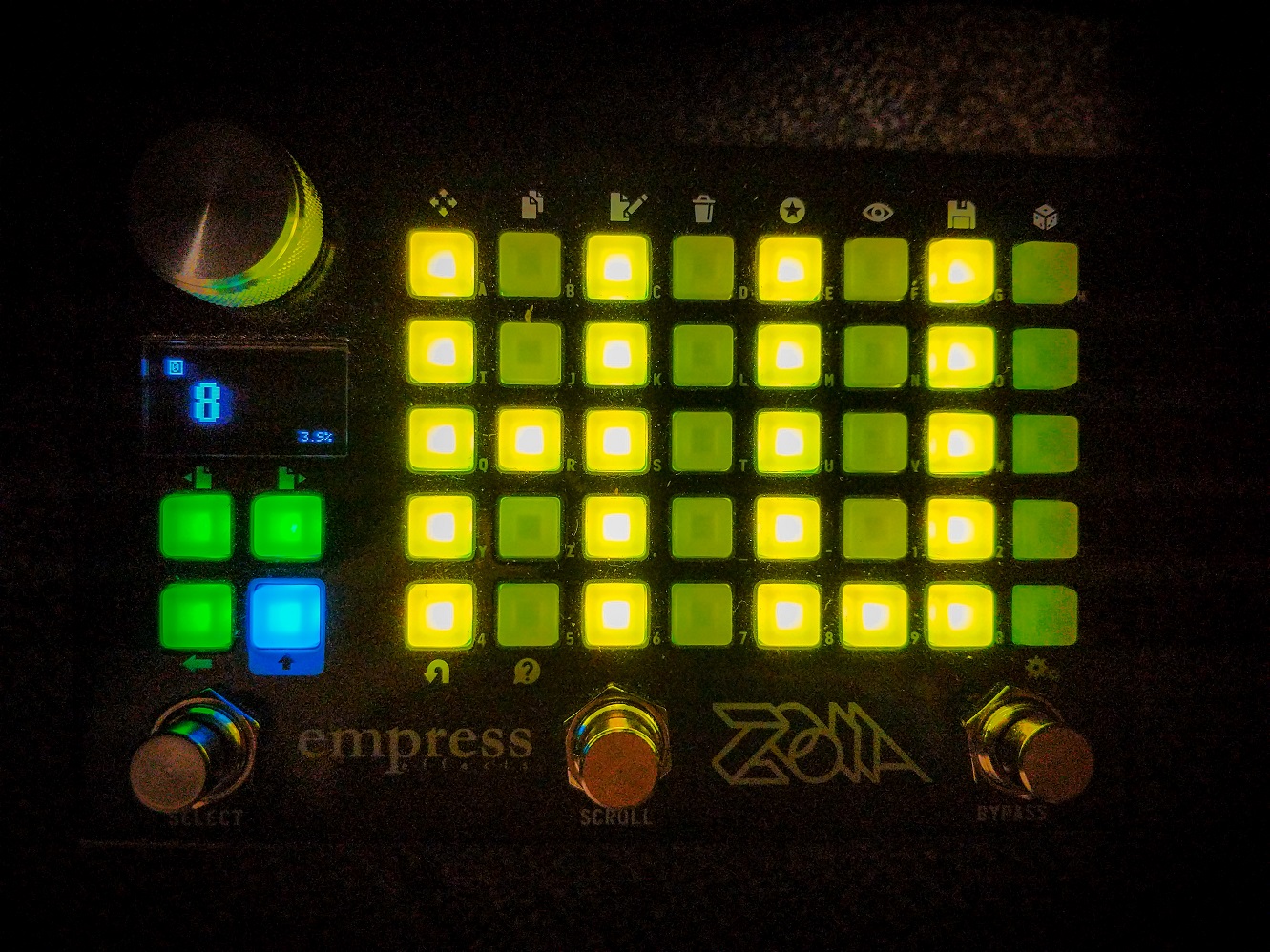UNDER NO CIRCUMSTANCE SHOULD YOU CHANGE THE PATCH NUMBER OF THIS PATCH!!!(!)
Preset 40 is a momentary rising random looper, hence the name of the patch.
Your right footswitch is where it happens. It does a quick record of some the last thing you put into ZOIA (which I bet was fine before you used this patch), hence the name of the patch. You’ll see a magenta pixel light up at [4] to show you something is playing from the looper. As the pitch rises, so too will you see a rising bar on the left side. It will max out and stop playing when all pixels are darkened.
Your middle footswitch injects a chance of randomness into whether the loop reverses (not that it matters, it’s the quickest clip and you can’t even tell), hence the name of the patch.
Your left footswitch sends the looped audio through a few granular modules to make things a little less recognizable, hence the name of the patch.
Your [B] button’s value adjusts the total hold time of the loop, hence the name of the patch. You’re going to want to tweak this one after the rest of the controls below it.
Your [J] button’s value changes the octave the loop rises up to. It’s quantized to change between 0-3 octaves at every .25 CV interval, hence the name of the patch.
Theoretically, your [R] button’s changes the longest time the loop will randomize to, hence the name of the patch.
Your [Z] button’s value changes the rise time of the loop, or how long it takes to get from unity pitch/speed to the pitch you selected using the [J] value. Coincidentally, this has nothing to do with the name of the patch.
Your [5] button’s value changes how long the loop holds at unity pitch/speed before rising, hence the name of the patch.
Your [0] pushbutton toggles kill dry mode. When the light is dim, you will always hear your dry signal, hence the name of the patch. When the pixel is fully illuminated, your dry signal will be muted when the loop is playing.
So there’s preset 40. Lots going on under the hood though:
Page 0 is UI. It’s a rainbow and a flower!
Page 1 is IO.
Page 2 is loopers and audio switches. Two red loopers crown the page. A surf VCA lies at row 3, connected to the switch next to it. That switch is driven by the kill dry pushbutton, and is fed by the CV invert above, which comes from our master AHD module on a later page. The peach audio outs route to the granular modules on the next page. The orange switches route the loopers/granular to the output.
Page 3 is the granular modules with LFOs. Nothing fancy here.
Page 4 is logic for timing. The top row is the AHR for the loop time, with a random/CV invert tied to the hold time to randomize. Row 2 is a comparator triggering an AHD for the total hold time (hold controlled by 0,[B]), with the comparator triggering the AHR on footswitch release. The third row is the speed hold/rise AHR.
Page 5 is an LFO network driving a random module for random times, into a comparator. This turns the comparator on and off at random intervals. That’s connected to the switch next to it, which is connected to the reverse function of the loopers. Obviously that switch is gated by the middle footswitch.
Page 6 is UI logic. Left side is comparators to turn on the pixels for the rising rainbow; the right side divides the “octave” value module into 4 parts.
So that’s why it’s called Preset 40.



Uuuuhhhmmmmm….
Welcome to the weird and wonderful world of Mr. Four Tee?
*Puts it in slot 47*